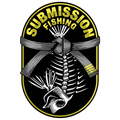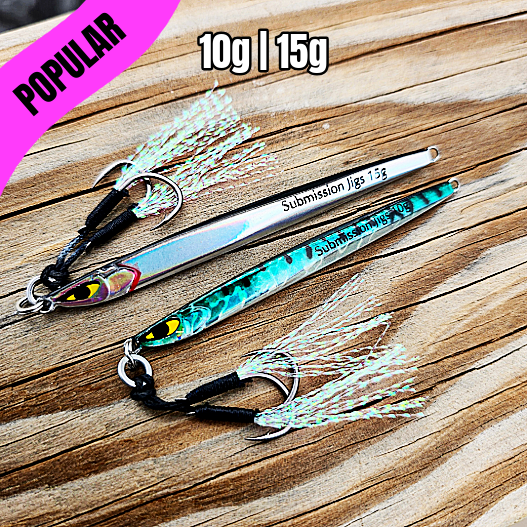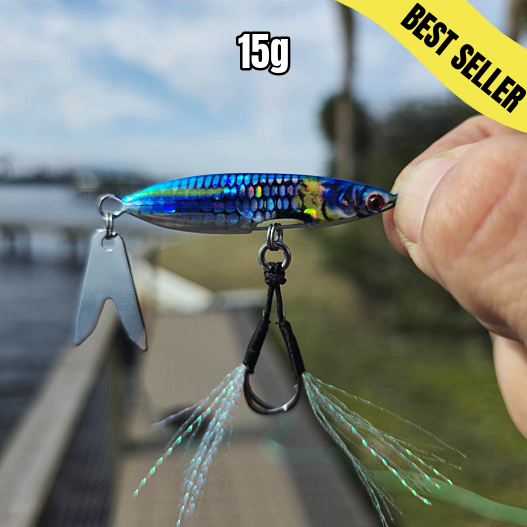5 Slow Pitch Jigging Mistakes (and How to Fix Them) | Submission Fishing Co.
The 5 Most Common Slow Pitch Jigging Mistakes (And How to Fix Them)
By Submission Fishing Co.
Slow pitch jigging looks simple—drop, lift, fall, repeat—but mastering it is a lifetime pursuit. Whether you’re targeting spotties inshore or tuna offshore, the difference between a slow day and a full cooler often comes down to technique.
After years of testing in real American waters—from SoCal kelp to the Gulf, New England bays to Hawaiian reefs—we see the same mistakes again and again. The good news? Every one of them is fixable.
⚠️ Mistake #1: Overworking the Jig
Slow pitch isn’t about aggression; it’s about precision. The goal is to mimic a dying baitfish, not a fleeing one. Overworking the rod kills the flutter that triggers strikes.
- Slow your cadence: quarter- or half-turn lifts are plenty.
- Let the rod’s parabolic bend load and spring the jig.
- Focus on the fall—that’s where most hits happen.
Try Micro Sumo and Mercenary Jigs (10g & 15g) for perfect flutter at slow speeds—deadly on spotties, bass, and trout when others are power fishing. The Ogre Jr and Death Blade each bring their own action to the table so you are never without the right weapon.
⚙️ Mistake #2: Mismatching Rod and Jig Weight
If your jig feels “dead” on the fall, your rod might be the problem. Each slow pitch rod is designed to load/spring within a specific gram rating. Using a 300g jig on a 100g-rated blank (or vice versa) kills action.
- Match your rod to your range (micro 10–40g, middleweight 40–300g, heavyweight 400–600g).
- Carry two rods—one light, one heavy—to adapt to depth/current.
See our full breakdown in the Best Slow Pitch Jigging Setup (2025 Guide).
🌊 Mistake #3: Ignoring Current and Drift
Staying vertical is everything. If your line scopes out, your jig isn’t pitching; it’s dragging.
- Watch line angle—adjust weight or reposition the boat.
- Start with “~1g per foot of depth” as a baseline.
- When current picks up, go heavier.
Our Javelin Jigs (100–200g) cut current and still flutter aggressively in deeper or faster water.
🪝 Mistake #4: Skipping Quality Assist Hooks
Factory hooks are often too short, dull, or weak. Upgrading hooks is the fastest performance boost you can make.
- Use saltwater-grade Submission Assist Hooks (BKK).
- Rig front and rear to boost hookups when fishing vertical.
- Check cords/knots often—corrosion sneaks up fast.
🧠 Mistake #5: Not Watching the Fall
Most slow pitch bites happen on the fall—a split-second tick or slack in the line. Miss it and you’ll never know a fish was there.
- Maintain light tension as you drop.
- Watch for bow/line changes and feather the spool/bail.
Glow finishes help tracking and draw strikes in murky/deep water. Explore our Middleweight Line Up of slow pitch jigs.
✅ Quick Submission Jigging Checklist
- Matched rod & jig weight
- Quality assist hooks, rigged front/rear
- Correct weight for current (stay vertical)
- Focus on the fall, not the lift
Every Submission jig—from the Micro Death Blade (15g) to our heavy slow pitch lineup—is through-wire tough, UV/glow finished, and tested coast-to-coast by real anglers.
👉 Ready to Fish Smarter?
Build your all-season jig box:
- 🪝 Shop Micro & Lightweight Jigs (10g–20g)
- ⚙️ Shop Middleweights (40–300g)
- 🎯 Browse Heavy Slow Pitch Jigs 400g -600g
- 🔩 Submission Assist Hooks – Saltwater Grade (BKK)
Your next PB is one pitch away.
Want More Tips Like This?
Sign up for our email list and get:
- 🎁 15% off your first order
- 🚀 Early access to new product drops
- 🎥 How-to videos with Mike Muto





